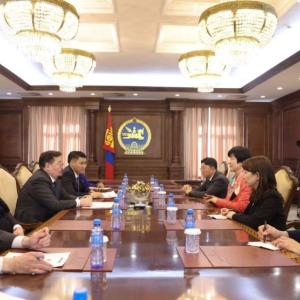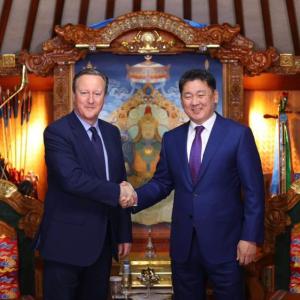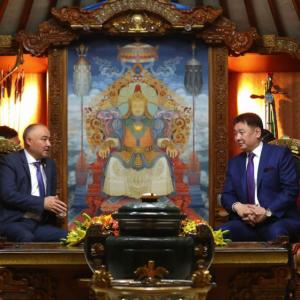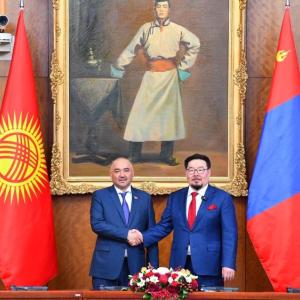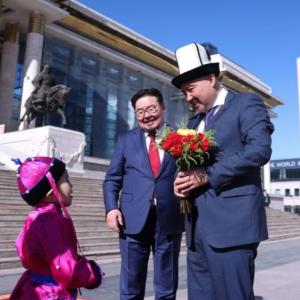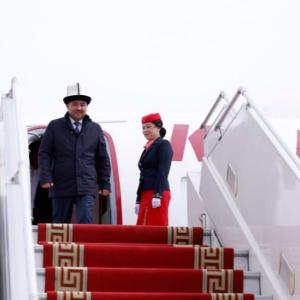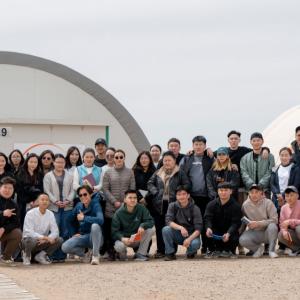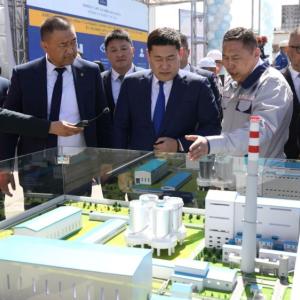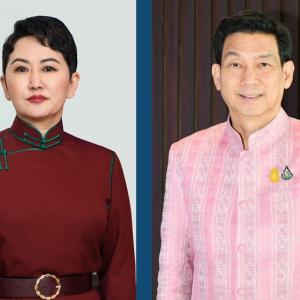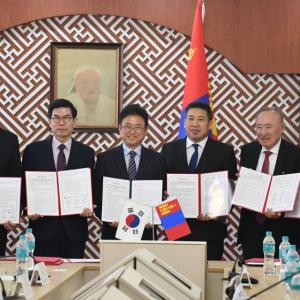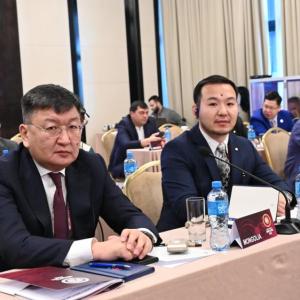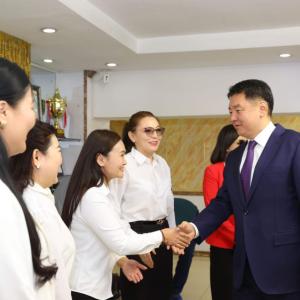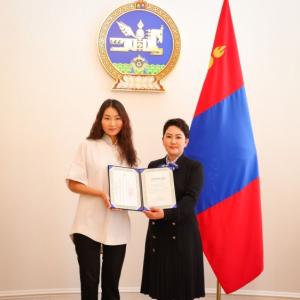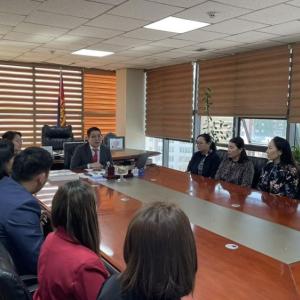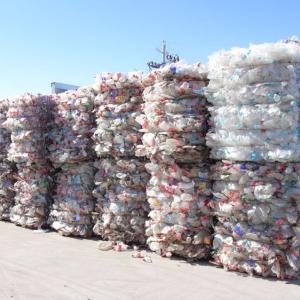A.Enkhjin: BoM aims to increase its gold purchase by 10 percent
The Mongol Messenger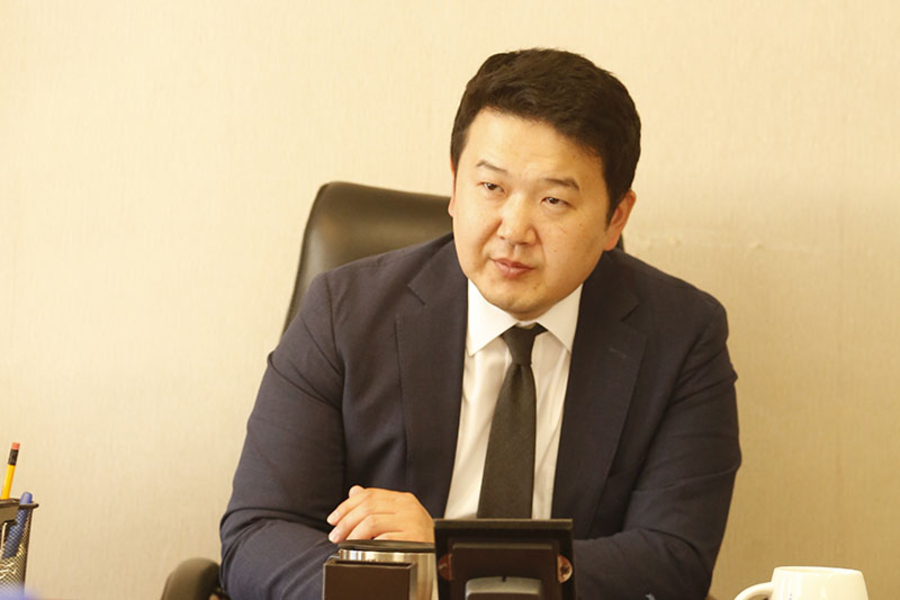
Head of the Reserve Management and Financial Markets Department of the Bank of Mongolia A.Enkhjin was interviewed on the purchase of gold and issues in this regard.
- How much gold the BoM is planning to purchase in 2018?
The amount of gold accumulated to the BoM reached 7.1 tons in the first half of the year, an increase of 400 kg or 6 percent compared with the same period of the previous year. Last year, a total of 20.01 tons of gold were purchased from the individuals and entities under the ‘Mongolian Gold’ campaign and the central bank plans to increase gold purchase by 10-20 percent this year. In order to achieve this goal, the bank launched the ‘National Gold to the Fund of Treasures’ five-month campaign to provide public with information about the bank's purchase of gold and its importance, conducting a wide range of trainings and promotional activities in this regard.
- How about the studies and researches on whether the Bank accumulates all extracted gold with its gold purchase?
The BoM receives monthly reports from the Precious Metals Assay Inspection Department of the Mongolian Agency for Standard and Metrology. The difference between the received assay data and gold purchased by the BOM is low. Therefore, it can be considered that the majority of gold mining companies and individuals sell the mined gold to the Central Bank. Before 2017, the annual average amount of gold sold to the BoM was 15-16 tons. However, the amount reached 20 tons last year, showing that the illegal gold trade was reduced as a result of the bank’s actions.
- In particular, how do you cooperate with law enforcement agencies to reduce illicit gold trade within this campaign? What do you think about the legal environment regarding the illicit gold trade?
Under the ‘Mongolian Gold’ campaign last year we organized a workshop in Zamyn-Uud soum of Dornogobi aimag on enhancing cooperation of public organizations and preventing illegal exports of gold and precious metals. As a continuation of this work, a number of promotion works on improving public education in this regard are being implemented under the ‘National Gold to the Fund of Treasures’ campaign. For instance, the billboards calling to sell the gold to the Treasury Fund are posted along the main roads from Ulaanbaatar to the rural areas, information on the gold purchase of the BoM are regularly broadcasted through the media and numerous works including the upcoming trainings and events in August are planned. The results of the previous campaign showed that in order to reduce illicit gold trade it is important to provide the public with appropriate information. It is important that the citizens recognize the consequences of illegal gold trade, specifically that the illegally exported gold is confiscated.
- Is there any legal reform planned for the accumulation of national gold in the Fund of Treasures within the campaign?
The BoM is developing draft amendments to the Law on Treasury Fund. The amendment regulates the approval of assay of precious metal, precious stones and their articles for sale to the Treasury Fund by the legal entity with assay license or by the BoM, the state administrative body responsible for assay. Thus, it will allow legal entities with license that meets international standards and requirements to assay precious metals, not centralizing assay activities on one organization. As a result, it will save time of gold miners and make the services of public organizations and NGOs more accessible. The 2014 amendments to the Minerals Law reduced the royalty for gold sold to the BoM and authorized banks to 2.5 percent, which played an important role in increasing the volume of gold sold to the Treasury Fund. The BoM has submitted proposals to relevant ministries to extend the term of the provision which terminates on January 1, 2019. In addition, the BoM is planning to undertake measures to support the gold producers' operations and to reduce the cost of financing.
- How is the BoM involved in the Government’s ‘Gold-2’ program?
‘Gold-2’ program is aimed at ensuring short and mid-term development of gold sector, stabilizing legal environment, intensifying prospection, using major gold deposits and deposits of other metals that contain gold, ecological gold mining, increasing production and efficiency by introducing advanced technology, increasing international competitiveness and improving economic benefits. The Cabinet Secretariat, Ministry of Mining and Heavy Industry, Ministry of Finance, Ministry of Environment and Tourism, BoM, local administrations, National Police Agency, professional government and non-government organizations, gold miners and individuals are cooperating within the program. Gold funding has not been solved in the years before the program. In 2017, MNT 31.9 billion loan was given to 10 gold mining companies to start the project. Thematic geological research works on gold started in central and eastern regions of Mongolia.
- Once our country is rich in gold resources, it is imperative that refineries are required in the future. How do you plan to solve this issue?
According to the BoM survey, in case of establishment of gold refinery in Mongolia, the refined gold will cost 3-4 times higher than we pay now. Moreover, it will be difficult to store and sell the refined gold at the international markets since the newly established plant can appear in the Good Delivery List only after 5 years of operation. Therefore, these issues should be considered before making decision on refinery establishment. The BoM has conducted studies on the gold refinery. However, more detailed researches, technical and economic calculations of the refinery need to be done.
- How much gold the BoM is planning to purchase in 2018?
The amount of gold accumulated to the BoM reached 7.1 tons in the first half of the year, an increase of 400 kg or 6 percent compared with the same period of the previous year. Last year, a total of 20.01 tons of gold were purchased from the individuals and entities under the ‘Mongolian Gold’ campaign and the central bank plans to increase gold purchase by 10-20 percent this year. In order to achieve this goal, the bank launched the ‘National Gold to the Fund of Treasures’ five-month campaign to provide public with information about the bank's purchase of gold and its importance, conducting a wide range of trainings and promotional activities in this regard.
- How about the studies and researches on whether the Bank accumulates all extracted gold with its gold purchase?
The BoM receives monthly reports from the Precious Metals Assay Inspection Department of the Mongolian Agency for Standard and Metrology. The difference between the received assay data and gold purchased by the BOM is low. Therefore, it can be considered that the majority of gold mining companies and individuals sell the mined gold to the Central Bank. Before 2017, the annual average amount of gold sold to the BoM was 15-16 tons. However, the amount reached 20 tons last year, showing that the illegal gold trade was reduced as a result of the bank’s actions.
- In particular, how do you cooperate with law enforcement agencies to reduce illicit gold trade within this campaign? What do you think about the legal environment regarding the illicit gold trade?
Under the ‘Mongolian Gold’ campaign last year we organized a workshop in Zamyn-Uud soum of Dornogobi aimag on enhancing cooperation of public organizations and preventing illegal exports of gold and precious metals. As a continuation of this work, a number of promotion works on improving public education in this regard are being implemented under the ‘National Gold to the Fund of Treasures’ campaign. For instance, the billboards calling to sell the gold to the Treasury Fund are posted along the main roads from Ulaanbaatar to the rural areas, information on the gold purchase of the BoM are regularly broadcasted through the media and numerous works including the upcoming trainings and events in August are planned. The results of the previous campaign showed that in order to reduce illicit gold trade it is important to provide the public with appropriate information. It is important that the citizens recognize the consequences of illegal gold trade, specifically that the illegally exported gold is confiscated.
- Is there any legal reform planned for the accumulation of national gold in the Fund of Treasures within the campaign?
The BoM is developing draft amendments to the Law on Treasury Fund. The amendment regulates the approval of assay of precious metal, precious stones and their articles for sale to the Treasury Fund by the legal entity with assay license or by the BoM, the state administrative body responsible for assay. Thus, it will allow legal entities with license that meets international standards and requirements to assay precious metals, not centralizing assay activities on one organization. As a result, it will save time of gold miners and make the services of public organizations and NGOs more accessible. The 2014 amendments to the Minerals Law reduced the royalty for gold sold to the BoM and authorized banks to 2.5 percent, which played an important role in increasing the volume of gold sold to the Treasury Fund. The BoM has submitted proposals to relevant ministries to extend the term of the provision which terminates on January 1, 2019. In addition, the BoM is planning to undertake measures to support the gold producers' operations and to reduce the cost of financing.
- How is the BoM involved in the Government’s ‘Gold-2’ program?
‘Gold-2’ program is aimed at ensuring short and mid-term development of gold sector, stabilizing legal environment, intensifying prospection, using major gold deposits and deposits of other metals that contain gold, ecological gold mining, increasing production and efficiency by introducing advanced technology, increasing international competitiveness and improving economic benefits. The Cabinet Secretariat, Ministry of Mining and Heavy Industry, Ministry of Finance, Ministry of Environment and Tourism, BoM, local administrations, National Police Agency, professional government and non-government organizations, gold miners and individuals are cooperating within the program. Gold funding has not been solved in the years before the program. In 2017, MNT 31.9 billion loan was given to 10 gold mining companies to start the project. Thematic geological research works on gold started in central and eastern regions of Mongolia.
- Once our country is rich in gold resources, it is imperative that refineries are required in the future. How do you plan to solve this issue?
According to the BoM survey, in case of establishment of gold refinery in Mongolia, the refined gold will cost 3-4 times higher than we pay now. Moreover, it will be difficult to store and sell the refined gold at the international markets since the newly established plant can appear in the Good Delivery List only after 5 years of operation. Therefore, these issues should be considered before making decision on refinery establishment. The BoM has conducted studies on the gold refinery. However, more detailed researches, technical and economic calculations of the refinery need to be done.

 Ulaanbaatar
Ulaanbaatar








